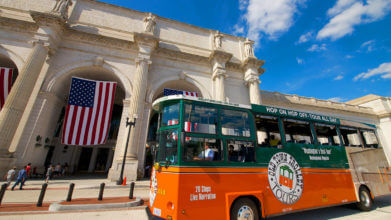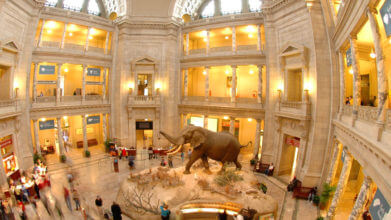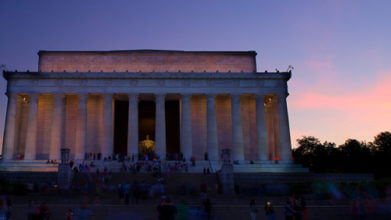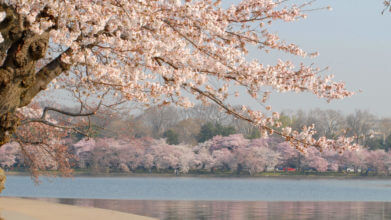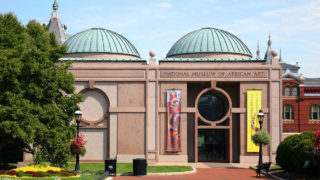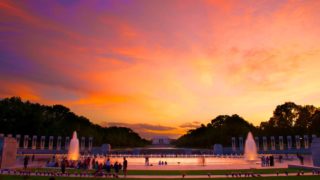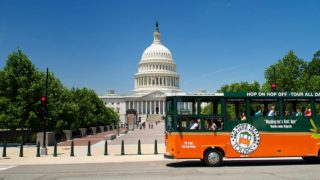Museum of African American History and Culture
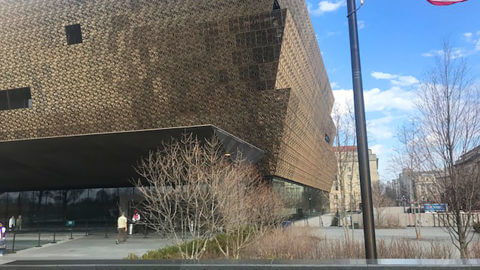
The National Museum of African American History and Culture chronicles America’s journey toward enshrining freedom, equality and democracy for all citizens. The museum houses a collection of more than 37,000 pieces related to a variety of areas, including slavery, segregation and civil rights as well as family, religion and the performing arts.
The Building
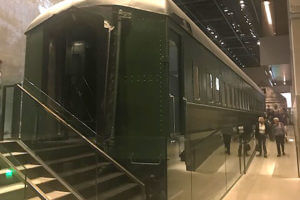 The idea for a museum dedicated to African Americans began as early as 1915. Congress passed the authorization bill in 2003, and a site was selected on the National Mall three years later. The Freelon Group/Adjaye Associates/Davis Brody Bond consortium won the design competition for a 350,000-square-foot building that conceptualized the unique experience of blacks in America. The exterior design of the above-ground floors features an inverted-step pyramid with bronze-colored architectural scrim. The museum’s appearance reflects the crown used by the Yoruba people, one of the largest ethnolinguistic groups in Africa. The segregated railroad car and a guard tower from the Louisiana State Penitentiary on exhibit inside could not be dismantled and reassembled, so the building was constructed around them.
The idea for a museum dedicated to African Americans began as early as 1915. Congress passed the authorization bill in 2003, and a site was selected on the National Mall three years later. The Freelon Group/Adjaye Associates/Davis Brody Bond consortium won the design competition for a 350,000-square-foot building that conceptualized the unique experience of blacks in America. The exterior design of the above-ground floors features an inverted-step pyramid with bronze-colored architectural scrim. The museum’s appearance reflects the crown used by the Yoruba people, one of the largest ethnolinguistic groups in Africa. The segregated railroad car and a guard tower from the Louisiana State Penitentiary on exhibit inside could not be dismantled and reassembled, so the building was constructed around them.
“The structure has five floors of gallery and cultural spaces above-ground and three below”
Must-See Exhibits
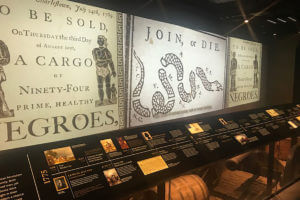
“Pieces of particular interest include personal items belonging to Harriet Tubman, a Bible owned by Nat Turner, Muhammad Ali’s boxing gloves and a trumpet played by Louis Armstrong”
Know Before You Go
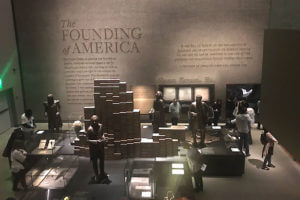
Along with tripods and selfie sticks, food and beverages are not permitted inside the museum. The award-winning, 400-seat Sweet Home Café offers a rotating menu of traditional African American dishes inspired by various regions of the country. Because parking is limited near the museum, it is recommended that visitors use public transportation. Serving the Blue and Orange lines, Federal Triangle and Smithsonian are the two closest Metro stops.
Nearby Attractions
If time permits, consider visiting additional nearby Washington, D.C. points of interest. Top recommendations include the following:
The National Museum of American History features displays and hands-on exhibits that reflect the social, political and scientific culture of the United States. The more than three million-piece collection includes the original Star Spangled Banner, George Washington’s uniform and Dorothy’s ruby red slippers from “The Wizard of Oz.”
The National Museum of Natural History is the most popular natural history museum in the world. It is dedicated to understanding the natural world around us and our role in it. Exhibits feature dinosaurs, the human experience, geological artifacts and minerals like the Hope Diamond.
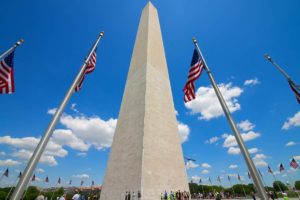
The Ellipse, or President’s Park South, is a 52-acre green space that features a variety of monuments and memorials. These include the Butt-Millet Memorial Fountain designed by Daniel Chester French, gatehouses by Charles Bulfinch and the Boy Scout Memorial by Donald De Lue. Along with the Zero Milestone, the Ellipse is the setting for the annual Christmas Tree and the National Menorah.

